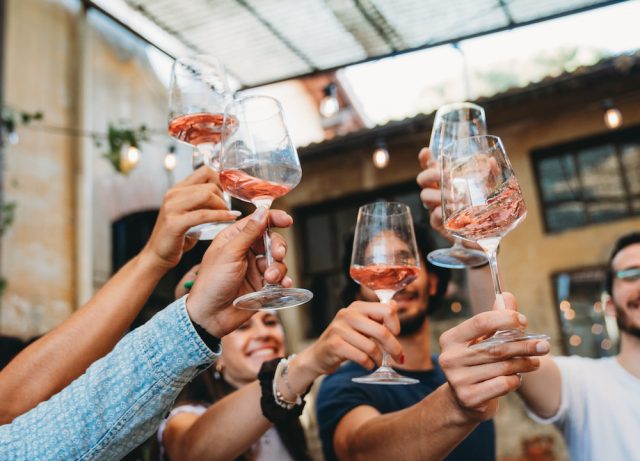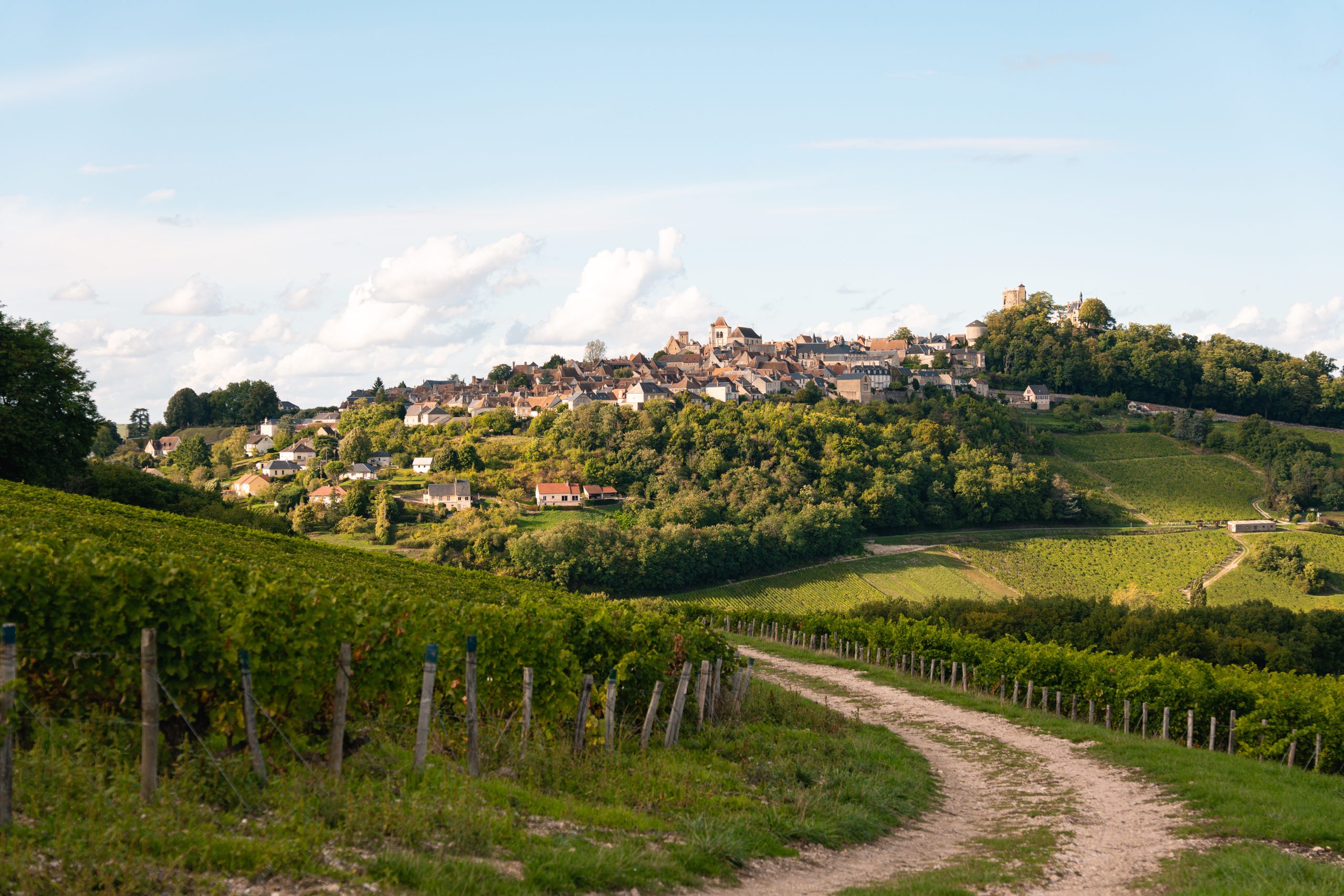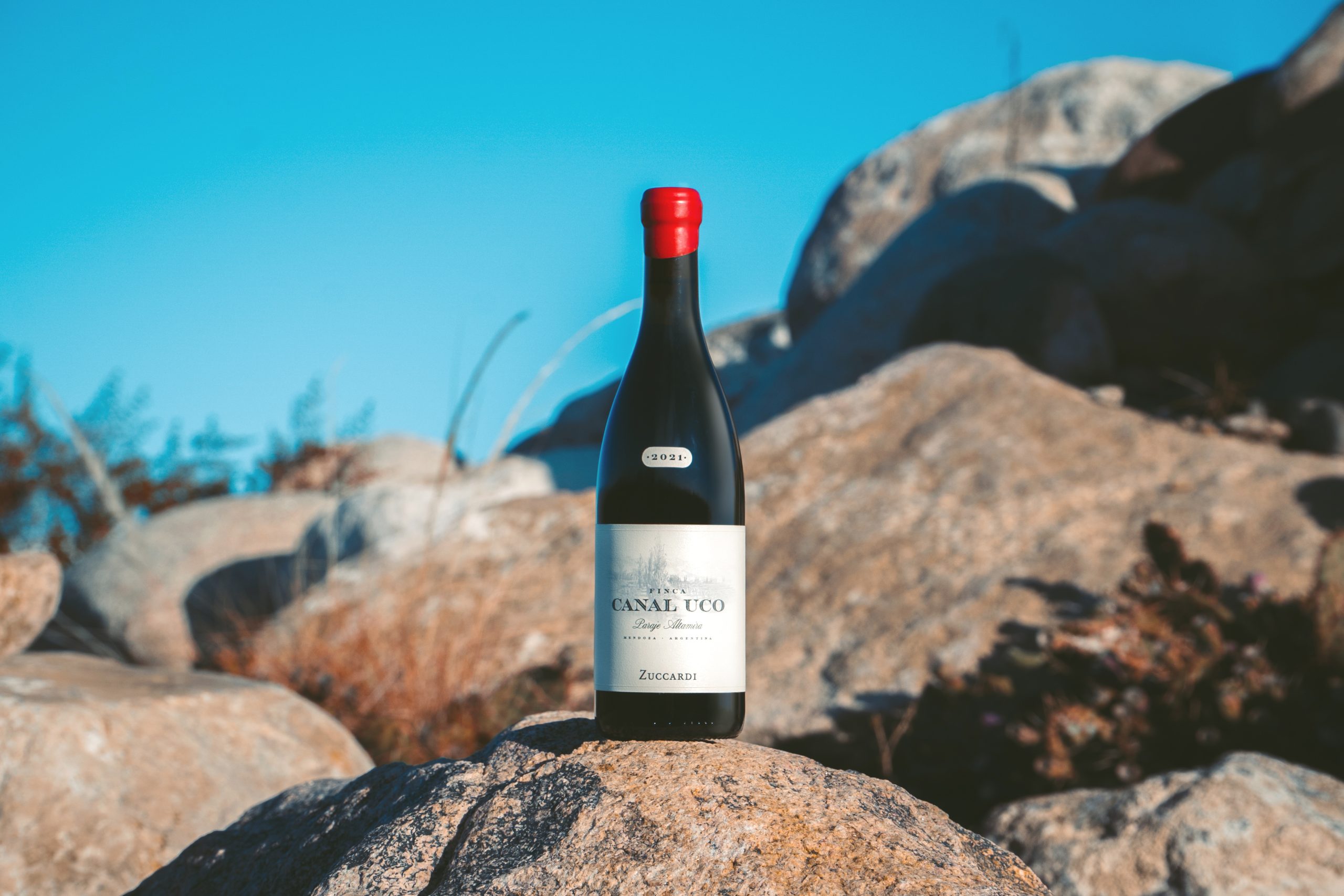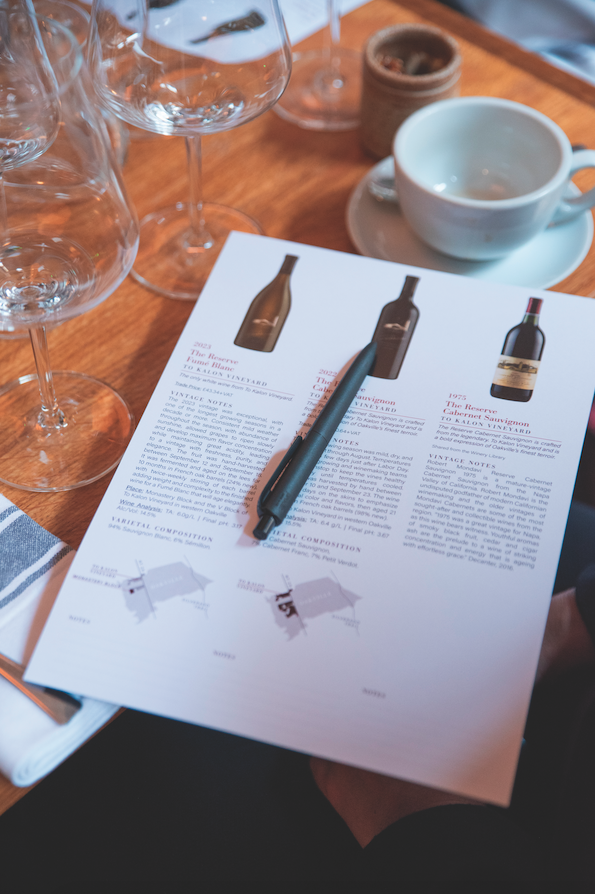Is the future of rosé still rosy?
For lovers of intrigue, unexpected plot twists, underdogs and unabashed sizzling luxury, forget Hollywood blockbusters. Just check out the rosé market. Kathleen Willcox reports.

The pink drink was dismissed for most of its history—especially outside of Provence—as a silly, unserious tipple suitable for lunch, or vacation dining. Importers like Kermit Lynch began shifting that narrative in the late 20th century, introducing dry rosés to Americans, who, for the most part ignored them, until they didn’t.
At the turn of the millennium, sales of French rosé began to take off, and with the help of savvy marketing, key partnerships with celebrities and premium quality at a reasonable price, sales spiked. Imports of Provence wine alone grew tenfold between 2010 and 2016, from 123,000 cases to 1.3 million cases, according to Impact Databank.
One wine—Chateau d’Esclans’ Whispering Angel brand—was credited with driving that growth, with 200,000 cases landing in American hands in 2016, though Chateau Miraval was close on its heels, with 91,000 cases landing in the U.S. that year.
For a few years, the party continued and brands across the world began producing their own versions of rosé—with mixed results. Seemingly every celebrity was coming out with a rosé, and it seemed that pink truly had become the cooler “third” color of wine that appealed to multiple cohorts across generations and budgets.
The bloom is off the rosé
Plot twist! After more than a decade of almost unimaginable growth, rosé’s upward trajectory has leveled off. People got sick of drinking rosé of dubious quality made from every grape under the sun.
Rosé shipments from Provence—the motherland and canary in the coalmine of rosé wine—dipped ominously for three years in a row. But! In 2022, the Provence rosé showed signs of renewed strength in 2022.
Exports to the U.S. rose 4% in 2022 to 1.9 million cases, according to Impact Databank, with the value of the shipment hitting a new all-time high of $151.1 million.
But the stomach-churning roller coaster commenced again in 2023, with decelerating growth.
Is the rosé market headed for a correction, or is it just maturing? There are signs that instead of this being an either/or question, these two states are not mutually exclusive.
While the 16 largest French rosé brands in the U.S. downgraded -3.3% collectively, for a total of 2.36 million cases shipped in 2023, that cohort is still shipping 400,000 cases more than they did pre-pandemic, per Impact Databank.
Sales numbers among the top cohort are unpredictable and scattered.
For more context on the top 4 movers in the U.S.: Whispering Angel’s shipments were down -11.2% year-over-year, while La Vielle Ferme’s were up 8.2%. Gérard Bertand’s showed declines of -9.8%, and Miraval’s were down -1.9%. Hampton Water, No. 8 in terms of sales, spiked in growth with a 27.7% surge.
Still rosy when compared to peers
Rosé, compared to wine more broadly, is still outperforming its peers.
Total global beverage alcohol sales declined -1% by volume, but did rise by 2% by value, according to data and intelligence firm IWSR.
Wine overall slumped, with declines in 2023 year-over-year of -4%, per the report. The premium wine sector was shaky, with declines in wine of -3%, though the super-premium price tier showed resilience with flat (0%) growth.
But rosé was a bright spot, according to the analysis, with premium rosé showing “strong appeal in key markets such as the U.S., the U.K. and Australia.”
As the rosé market matures how and why will certain brands and regions grow and contract? For insight into the story behind the numbers, the drinks business talks to producers and observers.
Built-in fan bases
Wines made by celebrities have multiple advantages that plain old plonk can’t compete with: built in global fanbases, a compelling and glamorous backstory behind the launch, a constant loop of social media / regular media promotion as a side effect.
“The use of celebrity endorsements has resulted in significant success for wine and rosé,” says Meghan Read, managing director at global specialist drinks branding agency Denomination. “Celebrity-backed brands benefit from a built in fanbase and strong social currency.”
Read says that as rosé overall delivers mixed sales, celebrity-backed brands do well. Snoop Dogg’s 19 Crimes Cali Rosé, which he supported with exclusive AR opportunities in which Snoop responded to questions from fans with personalized advice, has been a top seller since debuting in 2021. Meanwhile, Kylie Minogue’s Rosé launch in 2020 resulted in someone in the world drinking a glass of her rose every 1.5 seconds between 2021 and 2022 when rosé sales overall were slumping, according to Benchmark Drinks.
Chateau Miraval, perhaps the most famous celebrity-linked rosé (at launch, the initial 6,000 bottle release sold out in five hours), Matthieu Perrin co-owner of Miraval’s parent company Famille Perrin, admits that having Brad Pitt on board is a huge help.
“With rosé, lifestyle is leading the way forward,” Perrin says. “With Brad Pitt, we have a very notable business and creative partner associated with the brand.”
Ultimately though, Perrin believes the success of Miraval is also due its focus on building the brand through a “lifestyle lens.”
Even a vague association, as opposed to a direct partnership, can be a boon for a rosé brand.
“Ever since Rick Ross help up our black bottle of [Luc Belaire] Rare Rosé, a younger demographic has been introduced to our line,” says Brett Berish, CEO of wine and spirits company Sovereign Brands, who was repeatedly told that a rosé in “a black bottle would never work. But I don’t follow trends! Now the black bottle is a status symbol, and something you want to drink when you’re out, celebrating, dancing at a club.”
Opportunities in the luxury space
Top-selling rosé, increasingly, happening in brands with a carefully crafted image and a higher price point.
“Elaborately branded rosés have become an almost fail-safe way of driving immediate growth in a stagnant market,” notes branding guru Read. “The use of proprietary glass is key to this, with brands such as Paddington Lane and Gérard Bertrand’s Cotes des Roses Rosé using glass as a means of demonstrating distinctiveness and brand possibility, as well as highlighting the beauty of the wine’s color.”
The best example, Read says, is Miraval, which she sees as a visual fusion of American celebrity and French savoir-faire.
Partner Content
“Its Muse de Miraval Cotes de Provence Rosé has great shelf appeal through its value design,” she says, adding that in-the-know oenophiles will love the assemblage, which includes the addition of Rolle (Vermentino) from Italy, along with the more standard Provencal grapes Grenache, Cinsault and Syrah.
But there are other ways to catch the attention of big-spending wine lovers.
“There are many successful super-luxury rosés that rely less on branding and more on historical reputation,” says Read, citing Domaine Prieuré Roch Bourgogne Roses Rosé, made from the Vosne Romanee vineyards. “The visual identity and design of this brand is always going to play second fiddle to the highly valued provenance of this wine.”
Perrin sees super luxury prices rosé as a small, but powerful subset.
“The volume base of bottles selling above $100 is quite low when compared to the category at large,” Perrin notes. “But our organic Muse de Miraval, made from our finest plots, pushes the boundaries of rosé and opens doors to attract consumers who are highly engaged and can appreciate a rosé as a more serious wine, for celebrating special occasions.”
Barry Bayat, founder of Provence’s RUMOR, says he sees growth on and off-premise for higher-end rosé.
“Four years ago, a glass of rosé for $16 was rare, but now multiple rosés can be found at this price on restaurant lists, with many above $20 as well,” Bayat says.
He sees the markets in New York City, Southern California, Texas and Florida as being particularly strong for the luxury category.
Pepe Fundora, co-owner of Casa Nuova Italian Restaurant and Cork & Glass agrees that the cutoff point on rosé spending has reached new heights.
“It used to be bottles over $30 or more than $10 per glass was a cut-off for rosé but now we see guests willing to pay $18 a glass and $50 a bottle,” Fundora says.
Year-to-date sales of rosé this year are double what they were last year at the same time, Fundora notes.
Alternative avenues: non-alcoholic rosé & champagne and sparkling rosé
Rosé is usually associated with still, alcoholic wine. But that is not the only form it comes in.
Rosé is increasingly finding success with bubbles, and without alcohol. Sparkling wine across all categories has, like rosé, been a bright spot for wineries in recent years.
Iconic brands like Champagne Palmer, which has had a rosé Champagne on the market for decades, are finding significant growth in the rosé Champagne vertical.
In the past five years, Rémi Vervier, the house’s director general and CEO says their Champagne Rosé Solera has increased from taking up about 7% of their 1 million bottle output to around 11%. And wine lovers aren’t just popping the cork during the summer.
“It is consumed all year round, and is desired among women and men in all age groups,” he says, adding that the growth of the Solera mirrors the growth of their other Specialty Collection cuvées, like their Grands Terroirs or Réserve Nature.
Stephen and Dale Ott are also seeing an increase in interest in premium sparkling rosé at Nossa Imports.
“Consumers seem open to explore more expensive wines that are unique representations of terroir and tradition, like Prior Lucas Rosé,” Dale notes.
Sales of alcohol-free wines are also up. Sales of alcohol-free sparkling wine were up 7% year-over-year in 2023, and sales of still alcohol-free wine grew by 6%, according to IWSR.
Across the board, people are moderating their alcohol consumption, notes Joshua James, owner of Ocean Beach Café, a nonalcoholic bar and bottle shop in San Francisco.
“Millennials are driving the trend of mindful drinking,” James says, noting that sales of non-alcoholic beverages topped $565 million in 2023. “And about half of Gen Z isn’t really drinking.”
He notes that many of his top-selling wines, including Lautus De-Alcoholised Wines, South Africa and Prima Pavé NA Wine, Italy, are rosés.
Looking forward
Rosés with celebrity connections that sparkle, and are unique and premium are performing well now. Provence is still at the top of the heap when it comes to craveable rosé regions. But what’s next?
While Miraval’s Perrin still sees Provence as the benchmark and the driver of growth in the market, he sees the way people are consuming it in changing, with plenty of opportunity to capitalize on new marketing opportunities.
“Shifting consumer preferences like lower ABV, daytime drinking occasions and more mindful consumption focused on less but better wines offer great opportunities for certain segments and brands,” he says.
Perrin predicts that Miraval’s Cotes de Provence and Studio by Miraval, both ideal for daytime aperitif occasions, weekend brunches and rosé based cocktails, will be strong growth leaders for the brand.
Branding expert Read also urges people to think outside of the stereotypes around climate and season.
“Rosés easy-drinking and easy-on-the-eye characteristics makes it appealing to consumers across all geographical boundaries,” she says, adding that when branding and quality come together, rosé can appeal to “serious” and neophyte fun-loving consumers alike.
Rosé is the rare wine that can cross geographical, paradigmatic, gender, income and occasion lines. It may not be on a rocket-ship to the moon anymore, but produced and sold the right way, it can make a lot of people—on both sides of the bar—very, very happy.
Related news
Why rosé under the tree may be the ideal gifting solution




